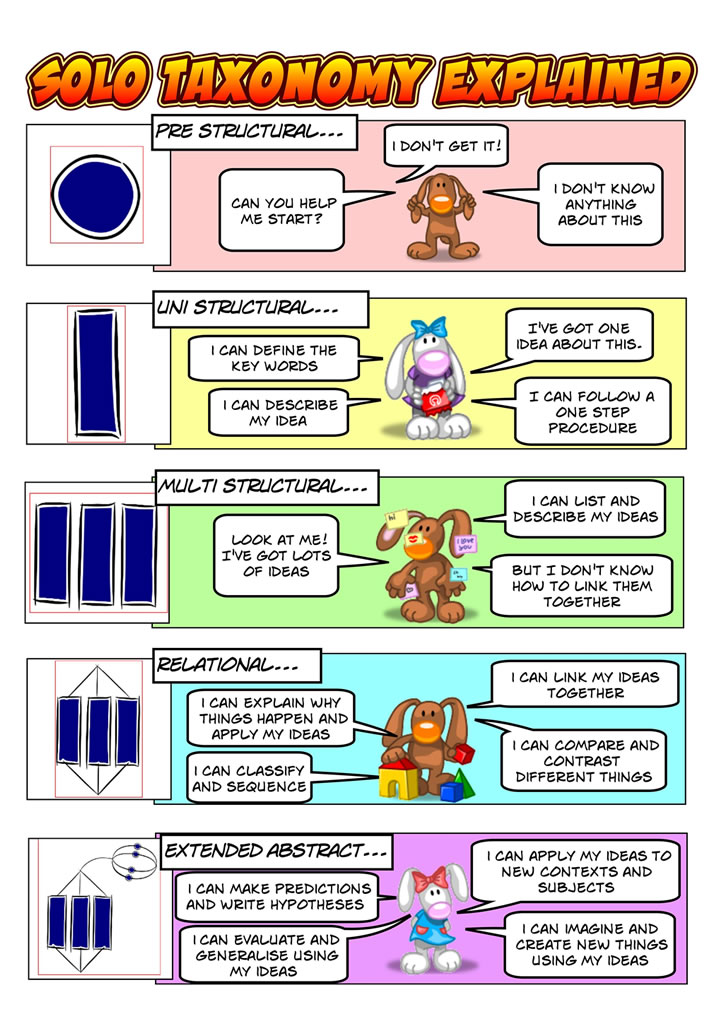SOLO Taxonomy
SOLO Taxonomy
To support STEM learning across a whole school a common simple 'language' that can be used by:
Teachers to:
-
- Discuss and plan with colleagues
- Plan differentiated programs
- Develop self-assessment resources
- Provide and receive feedback
- Reflect with students on learning
- Undertake planned research and student led inquiry
and
Students to engage in learning related questions such as:
-
- Why am I learning this?
- By seeing a clear purpose.
- How is my learning going?
- Through self-assessment and via peer and teacher feedback.
- What can I do next?
- Using strategic planning to map a course of action
- Why am I learning this?
and
Be truly hierarchical (e.g. unlike Bloom’s Taxonomy) to keep the framework simple and be easily understood (without the need for subtle nuisances to be grasped) thus providing a truly universal language for all students.
The team has decided to further explore the SOLO Taxonomy (Structure of Observed Learning Outcomes) which seems to meet these criteria.
It is recognised that SOLO provides a taxonomy that provides a classification for surface, deep and conceptual understanding but it does not address ‘correctness’ an important aspect in STEM. Thus this aspect will need to be carefully examined and considered.

Linked to http://www.mbms.org.uk/faculties/science/assets/SOLO/solo-taxonomy-explained-full.jpg
Resources and Links
Further Reading Resources
Biggs, J. (1999). Teaching for quality learning at university. Buckingham: Buckingham Open University Press.
Biggs, J.B., & Collis, K.F. (1982). Evaluating the quality of learning: The SOLO taxonomy. New York: Academic Press.
Biggs, J., & Tang, C. (2007). Teaching for quality learning at university. What the student does (3rd Ed.). Berkshire: Society for Research into Higher Education & Open University Press.